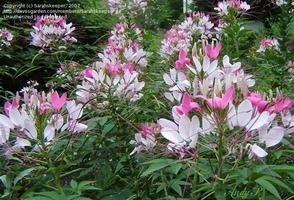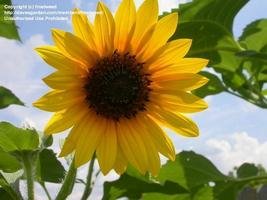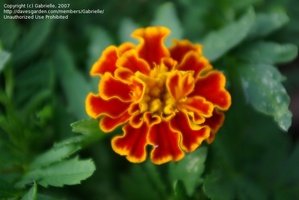





It never seemed to matter what the question was, the three women in my childhood would give me the same answer, "There's always a reason". Sometimes that reason was because they said so, but most of the time Mom, Granny Ninna or Aunt Bett would go ahead and explain their answers to my questions. All these many years later their knowledge is my treasure.
(Editors' Note: This article was originally published on May 1, 2008.)
In all things of nature, there is something of the marvelous. (Aristotle)
My mother was a schoolteacher and when I was very small I spent most of my time with Granny Ninna and Aunt Bett. During school days, Mom and I lived with Ninna through the years of WWII, and on weekends we would visit with my maternal grandparents. Ninna lived much closer to the school where my mother taught and it was easier for her to walk the mile to and from work. After my dad came home from the military, we continued to live in the house with Ninna, where he had grown up. There were no daycare centers in the mountains, and I never heard of a babysitter until I had my own children, So there I was with Ninna and Aunt Bett, their two houses separated only by a short walk down a dirt road and a leap across the creek.
In the early spring when it was planting time, I tagged along with them to work in both their gardens. It seems to me now that they might have alternated days in each other's gardens, but whatever they did, it worked for both of them. Their gardens were a sight to behold. They were widows, and they were survivors, so working in the garden was just a way of life from daylight till nearly dark, from early spring till the crops were all in, and all the vegetables had been "put away" for winter. Of course gardening in those days meant planting, weeding, gathering, canning, drying and everything that goes with having enough food to last all winter. It also meant saving and trading seeds. I remember that one of the great uncles would come each spring to plow the fields where the gardens were to be, and they came to clear the field when the season was over, but those were the only times when a man was in either of the two gardens. Gardening was a woman's work.
Both of these lovely ladies grew flowers among their vegetables. At the time I thought morning glories were supposed to grow up the corn stalks, and bee balm was always among the tomatoes. Lettuce beds were planted several times from early spring till late summer, and those beds were surrounded by the bobbing heads of the spider plants. That's just the way it was, until I asked and was told: "There is always a reason....."
In writing articles about Aunt Bett and her medicinal plants, I had to dig deep into my memory bank. I also dug into my old photographs, recipe books, papers and all the assorted items that can be handed down from a mother to a daughter. Luckily for me, in her papers and albums, Mom had saved what she had from other relatives including Aunt Bett. It is a good thing that I am expecting no company anytime soon because one extra bedroom is covered in old papers, pictures and paraphenalia of past lives.
Among the papers that I found was one that had lists in two columns. The list was divided into sections and was simply the common names of plants that were easily grown in the Appalachian mountains. I kept looking for more references but couldn't find any that made sense to me. The paper it was written on was brown with age and the printing on it did not seem to match that of any of my relatives. I spent the better part of two days trying to remember their gardens. Finally, just like a flash in the dark, all the pieces of the puzzle fell into place. I love moments like that, don't you? However, that first memory was anything but pretty.
I remembered being barefoot in the garden and stepping on a toad. I had already heard about the warts that touching a toad was going to cause, and just thinking about a wart covered foot brought on the tears. I was so upset I wanted to get rid of every frog in that garden, but Ninna and Aunt Bett told me this: "There is a reason to have toads in the garden." I really cannot claim to remember the exact words, but they told me that toads are good for the garden because they act as a natural pest control.
That was one of my first "reasons". With the help of some older relatives, I have since remembered many more. To my surprise, what those two little old ladies were doing was Companion Planting. It did not have a name in those days, at least none that I ever heard, and I am not sure that it was done with a plan in mind. It was simply what had worked for them in the past, and that was enough of a reason. We now know that many plants have natural substances in their roots and leaves that can alternately repel or attract insects as needed, as well as enriching the soil. Here is a brief listing of what they planted together, and in most cases why, written in my words with a few of theirs thrown in.
Cleome was always planted around a lettuce bed to shade the lettuce during the hot summer days.
Peas were always planted next to corn, peas are good for the soil.
Drop a castor bean (Ricinus communis) into mole holes, it poisons the moles. Plant castor beans in the garden, it poisons beetles and varmints.
Sprinkle hot pepper or mothballs to keep rodents away from bulbs.
Squash several cloves of garlic and soak in water overnight. Spray the water on plants to prevent caterpillars.
These flowers kill insects and Japanese beetles: Aster, Datura, four o'clocks (Maribilus jalapa), larkspur (delphinium); they are also poisonous to people.
These repel or deter insects: basil (Ocimum basilicum) repels flies and mosquitoes; catnip (Nepeta cataria) repels fleas and beetles; chives (Allium) repels most harmful insects; Chrysanthemum deters most insects; Dahlias repel nematodes; geranium (Pelargonium) plant with corn and cabbage; mint (Mentha) deters cabbage moth and ants; marigold (Tagetes) keeps pests from tomatoes and roses and repels bean beetles and aphids; lavender (Lavendula) repels ticks; nasturtiums (Tropaeolum majus) deter aphids and beetles; rosemary (Rosemarinus) plant with carrots and cabbage, it repels most insects; sage (salvia) repels the cabbage moth; sunflowers (Helianthus) rids plants of aphids; Allium, plant near roses and tomatoes.
These plants lure honey bees and other pollinators: Yarrow (Achillea), bee balm (Monarda), Aster, and Zinnia.
Morning glories (Ipomoea) attract lady bugs and pollinators.
Fire pink (Silene virginica) catches flies on its sticky stem and leaves.
Cosmos attracts the praying mantis.
Allium deters Japanese beetles, but don't plant close to beans and peas.
And there you have it, simplified companion planting done by two little old Appalachian ladies during the 40's and 50's. They planted enough to feed the entire county, and none of it ever went to waste. They grew potatoes, corn, beans, tomatoes, squash, cucumbers, peppers, peas, lettuce, onions, cabbage and every flower imaginable. I learned from reading what they left behind that all this interplanting is a very old gardening concept: planting a wide variety of things rather than a single crop. Another thing that I remember is that their crops were never in the same place from year to year. The lettuce bed with it's dancing spider plants moved from corner to corner in the gardens. Corn moved from the front to the back and then back again: crop rotation at its finest. I doubt they could have explained the reasons for success in a scientific format, but they knew what worked best to produce a fine crop.
I am sad to say that I have never had a really complete vegetable garden in my adult life, nothing like those that I grew up with. I have never had the space nor the inclination, unless I give up some of my flower beds, but I surely do get a craving sometimes. I can get a whiff of moldy earth and remember the cellar where jars upon jars of vegetables were stored. They dried beans on a string and hung them dangling on the screened in porch. These women who came before me were totally self reliant, but I am not sure that I am capable of survival in the ways they were. Perhaps if I were solely responsible for feeding myself and a family during the winter, I could call upon the legacy of knowledge that they left with me and hopefully we would all survive.
Oh, by the way, I never did get warts. I think it was the asphidity bag that saved me.
Happy Gardening to all of you.
All photos are from Plant Files.
A special thanks to the photographers: Toxicdendron, Gabrielle, Frostweed, and Sarahskeeper.
Copyright © www.100flowers.win Botanic Garden All Rights Reserved